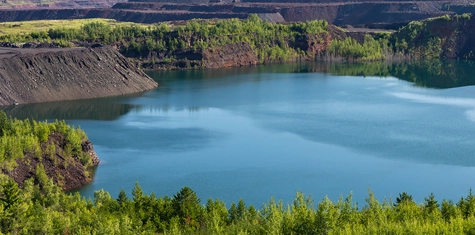It is commonplace for the mineral interests in a parcel of real property to be separated from the surface interests. Oil, gas, coal and other hydrocarbons, as well as metals like gold, silver and iron, are the minerals typically subject to “mineral reservations” in deeds to real property. It is not always as clear whether materials such as clay, gravel and sand are also subject to mineral reservations – or whether those materials belong to surface owners. For instance, while North Dakota Century Code § 38-12-01(7) makes clear that sand and gravel are not “subsurface” interests, Wisconsin’s Attorney General has opined that gravel and sand are considered minerals. 67 Op. Att’y Gen Wis. 236. In an interesting recent decision, an Arizona court found that a mineral reservation did not include stone, rock and clay.
In Paulden Industrial LLC v. Big Chino Materials LLC, the Arizona Court of Appeals closely examined the language of a mineral reservation in a 1941 deed. 471 P.3d 653 (Ariz. Ct. App. 2020). Importantly, the Paulden court acknowledged that a broad mineral reservation typically reserves the right to “all inorganic materials with economic value – including stone, rock, sand and clay.” However, the court found that due to the context of the specific language of the deed in the Paulden case, stone, rock, sand and clay were excluded from the deed’s general mineral reservation.
The deed at issue in Paulden included a broad reservation of “all minerals, including coal, oil, petroleum, ... natural gas and all other hydrocarbon substances. ...” However, the deed also included another provision allowing the mineral interest owners to remove “such stone, rock, sand and clay as may be necessary or convenient in carrying on their operations in connection with their rights, privileges and interests accepted and reserved [under the deed].” The Paulden court found that the specific language providing that the mineral interest owners could remove stone, rock, sand and clay only as “may be necessary” to carry on operations in removing the other mineral interests reserved under the deed, overrode the general rule that “inorganic materials with economic value” are included in a mineral reservation. Accordingly, the Paulden court found that the ability to remove stone, rock, sand and clay remained with the surface owners in that case.
The Paulden decision is a reminder that the language of a mineral reservation can be crucially important, especially when dealing with materials that are not universally considered to be “minerals.” Because opinions as to what constitutes a “mineral” can vary both regionally and over time, the use of careful and specific language in a mineral reservation can avoid litigation down the road. Further, owners should keep these considerations in mind when reviewing mineral reservations in connection with a purchase or sale of mineral interests.




